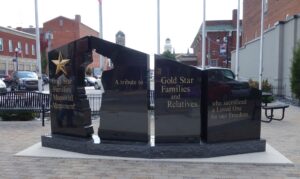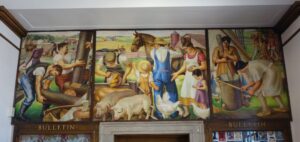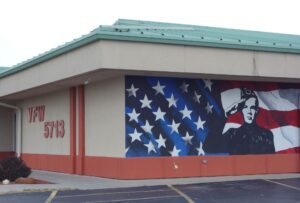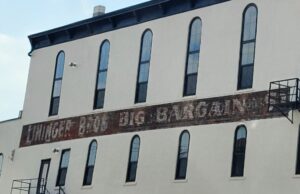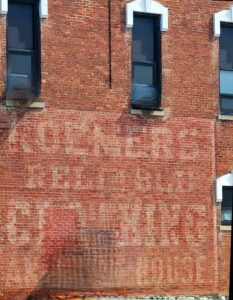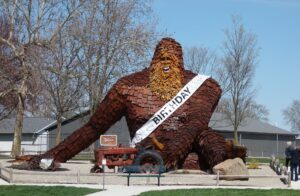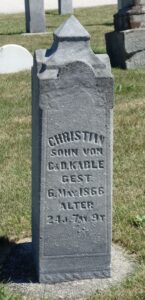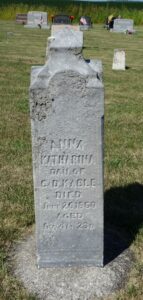Today, a blast from the past. A cartoon-like advertising poster/map of the Celina-St. Marys area, created for the 1988 Grand Lake Crappiethon.
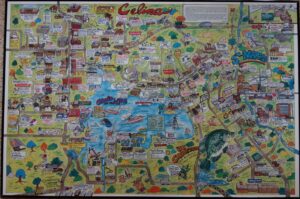
1988 Grand Lake Crappiethon Poster
“Crappiethon” fishing events were held on Grand Lake for several years and were very popular. Prize money was awarded and a lucky fisherman could win $50,000 if he caught the Crappie named Tanglefoot.
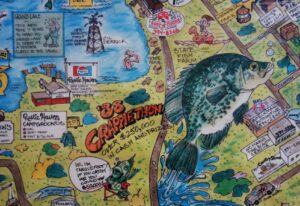
1988 Grand Lake Crappiethon Poster
I don’t remember who gave me this poster, but I’m pretty sure it was someone who came into the St. Marys office.
The poster features caricatures of businesses and a general idea of their location. Things are not quite to scale, but it is fun to look at the map and remember businesses that are no longer there, that have changed their name, or have moved to a different location.
How many of these businesses do you remember?
Take a trip down memory lane.
On the Celina side of the poster: JC Penney, Uppercut Styling Salon, Goldstein’s, Pogue’s, Bair Pharmacy, The Orchard Tree Restaurant, Huffy Bicycles, and Rax Restaurant.
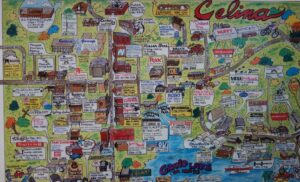
1988 Grand Lake Crappiethon Poster, Celina side.
More on the Celina side: Gospel Gift & Book Shop, Lake Front Racquet & Health Club, Bob’s Audio & Video, Martin’s Restaurant, Lake View Carryout, and in Montezuma, Arnie’s Corner Restaurant.
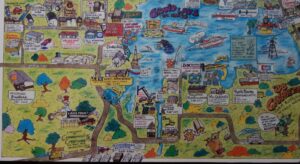
1988 Grand Lake Crappiethon Poster, Celina side.
There is even a little historical information about Mercer County.

1988 Crappiethon poster, historical information.
On the St. Marys side of the poster: The Innlet, Paris Cleaners, Happy Humpty, S & W Motel, Lucky Steer, Koch’s Restaurant, The Old Canal Inn, and Grand Carriage II. In Wapakoneta, the Chalet Inn and Neil Armstrong Air & Space Museum are featured.
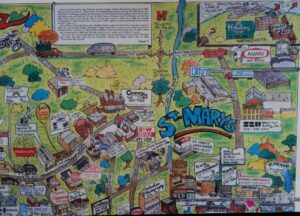
1988 Grand Lake Crappiethon Poster, St. Marys side.
More from the St. Mary’s side: Logan Furniture, Good Year Tire & Rubber, and Coat of Arms Restaurant.
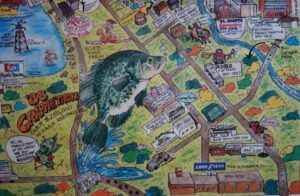
1988 Crappiethon poster, St. Marys side.
I remember just about every one of these businesses and miss many that are no longer there.





